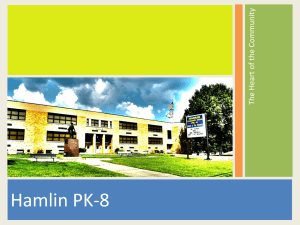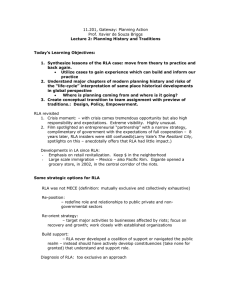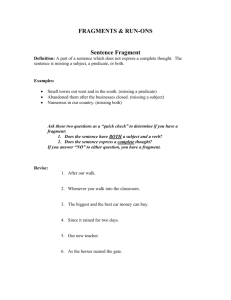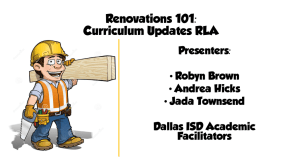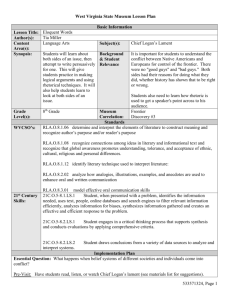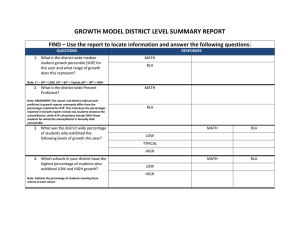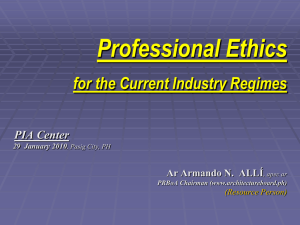Alex Whitt - Marshall University Personal Web Pages
advertisement
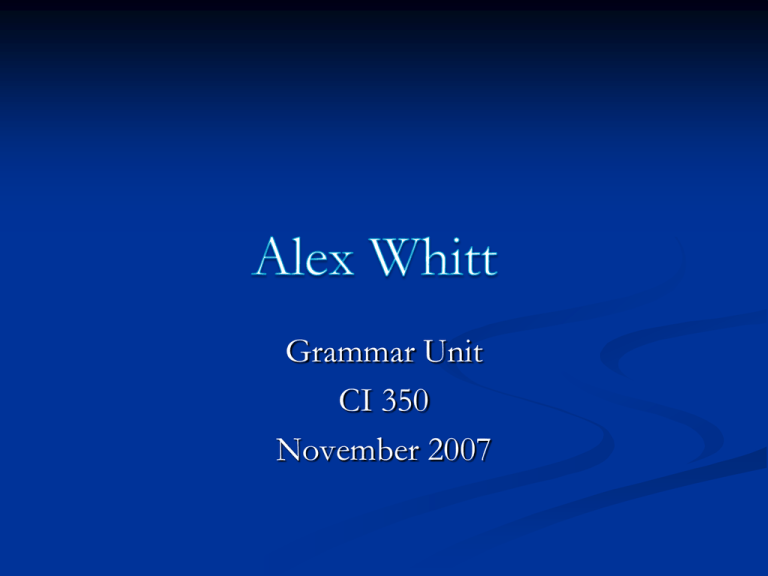
Grammar Unit CI 350 November 2007 Analyze Learners High School Freshmen level Approximately 15 years old No special needs students Need to have basic knowledge of what has been taught up to this point in their schooling. State Objectives RLA.9.2.21 Students will recognize and correct errors in pronoun case usage and pronoun/antecedent agreement. RLA.9.2.22 Students will recognize and correct run-on sentences, fragments, misplaced modifiers and awkward constructions. RLA.9.2.3 Student will employ drafting strategies for specific writing tasks. RLA.9.2.8 Students will use complete and varied sentences to develop a composition. RLA.9.3.5 Students will recognize and correct usage errors in oral language. 21C.O.9-12.1.TT.10 Student implements various Internet search techniques to gather information; student evaluates the information for validity, appropriateness, content, bias, currency, and usefulness. Select Media and Materials Ink pen Worksheets Overhead Notebook paper Computer (provided by school) Websites Websites “Interlink Language Center” – a website that has tests and quizzes. It can be used by teachers to develop questions on worksheets. http://www.eslus.com/LESSONS/GRAMMAR/POS/pos.htm “The Parts of Speech” – a website that defines each part of speech. A good quick reference for students. http://www.cftech.com/BrainBank/OTHERREFERENCE/GRAMMARAND PUNCTUATION/PartsSpeech.html “University of Ottawa (Writing Center)” – a website that has sentences with a word in bold to be identified as to what part of speech it is. It also has material that can be developed into questions for students to answer. http://www.uottawa.ca/academic/arts/writcent/hypergrammar/rvpartsp.html “Parts of Speech Games” – a website that has game for students to play that will help them identify parts of speech. http://www.gamequarium.com/partsofspeech.html Utilize Media and Materials (day one) Class will be broken into four segments. Class will begin with a short lecture on what pronouns and antecedents are. Overhead will be used to show pronouns and antecedents to students. Will also help to encourage a class discussion on the same subject. Students will receive a worksheet on pronouns. Once it is completed and turned in they will receive a worksheet on antecedents which will be completed by the end of class. Questions on these worksheets will be provided by the website “Interlink Language Center.” Day two Short lecture on sentence fragments and run-on sentences. Quick overheard visual aid to add class discussion and participation. Break into groups of 3. Worksheets in groups on the run-ons and fragments. Let students collaborate with their own questions in groups before asking teacher. Day 2 breakdown Lecture Discussion Groups Questions Turn in Day three Quick review of last two days by class discussion Pick historical character to research. Go to computer lab to access internet for sources. Students type paper 1-2 page paper concentrating just as much on grammar ass research. Day four Turn in research papers. CD with people talking. Worksheet with questions about errors in speech. Students will be given a chance to ask any questions on the material that has been covered in this unit. Class will end with the students being prepped for the following days games. Day five Game day “Jeopardy” – class divided into 2 teams. Will cover material from unit. Bell Ringer – same teams, each send one player to answer question. First to ring bell gets to answer. Require Learner Participation Insert humor into the material on the worksheets Reward students for being vocal in class discussions Games Evaluate and revise RLA.9.2.21 Students will recognize and correct errors in pronoun case usage and pronoun/antecedent agreement. RLA.9.2.22 Students will recognize and correct run-on sentences, fragments, misplaced modifiers and awkward constructions. RLA.9.2.3 Student will employ drafting strategies for specific writing tasks. RLA.9.2.8 Students will use complete and varied sentences to develop a composition. RLA.9.3.5 Students will recognize and correct usage errors in oral language. 21C.O.9-12.1.TT.10 Student implements various Internet search techniques to gather information; student evaluates the information for validity, appropriateness, content, bias, currency, and usefulness.
